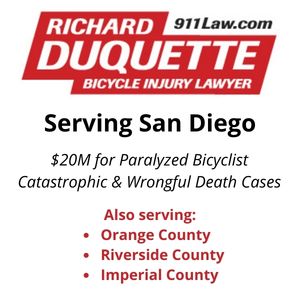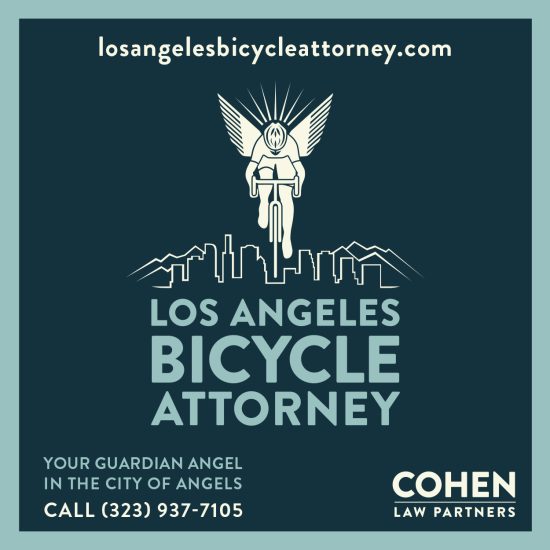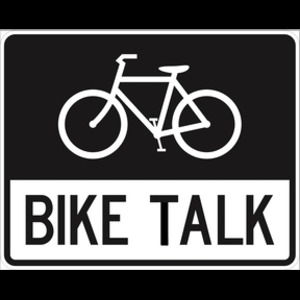Dj Wheels catches us up on the current of court cases affecting the cycling community — some of which we’ve discussed before, along with a few new ones in the ever expanding list of drivers brought to justice.
Robert Sam Sanchez, charged in the hit-and-run death of Rod Armas in Malibu while allegedly intoxicated, had his Preliminary Setting continued to May 26 at 8:30 am in the Malibu Courthouse.
According to Wheels —
I didn’t see anyone that appeared to be there for the victim’s family, but there were plenty family members there in support of the Defendant. The deputy DA said again that there would either be a disposition on this day (ie. a plea deal entered) or there would be a date selected for a Preliminary Hearing (a mini trial before the judge to determine if there is sufficient evidence to hear the case before a jury).
William Keith Square, arrested in the hit-and-run death of a still-unnamed cyclist in Carson on April 17th, was arraigned three days later and entered a not guilty plea on all counts. A Preliminary Setting was held on May 5th, and Preliminary Hearing scheduled for June 10 at 8:30 am. Notes Wheels, “Funny how when you don’t have private counsel, the process moves a lot faster.”
Angelina Gailine Everett, accused of the hit-and-run that left an injured Ed Magos lying in the street on January 6. Dj Wheels explains —
She initially stopped, but then left the scene without rendering aid or exchanging information with the injured cyclist. The city attorney was not going to file charges at first, but after pressure from the cycling community and a promise from the newly appointed Chief Beck to request that the C.A. take a second look at it, charges were finally filed on April 6. There was an initial arraignment date of May 6, but apparently Everett did not show up. According to my sources, the city attorney might have sent the citation and notice to appear for her arraignment to an old address. The court’s system still doesn’t have a new arraignment date entered.
Everett is charged with:
1) one misdemeanor count of leaving the scene of a collision where there physical injuries to one of the involved parties – CVC 20001
2) one misdemeanor count of leaving the scene of a collision where there is property damage – CVC 20002(A)
Naira Margaryan, accused in the death of Gerado Ramos 13 months after he was struck while riding in a Glendale crosswalk.
On September 23, 2008, Margaryan ran over a cyclist at a crosswalk in a residential section of Glendale, after allegedly blowing through a stop sign. Detective Mankarios of the Glendale PD claims the victim cyclist was somehow also at fault in violation of the Cal Vehicle Code by riding his bike on the sidewalk. The case was filed on April 30. There was an initial arraignment date of May 13, and the defendant appeared with private counsel but did not enter her plea. Arraignment was continued to June 2 at 8:30am at the Glendale Courthouse in Dept. 1.
Margaryan is charged with:
1) one misdemeanor count of vehicular manslaughter without gross negligence – PC 192(c)(2)
In a non-bike related case, former state legislator Walter Karabian stands accused of assaulting an unnamed parking attendant during a USC football game last fall. Wheels reports that a pretrial conference was heard on May 13, with another hearing scheduled for June 10 for compliance with discovery requests, as well as a Trial Setting Conference. A jury trial has been tentatively scheduled for July 19.
Yelena Krupen is accused of damaging the property of an unnamed victim in a hit-and-run collision while driving with a suspended license.
On December 3, 2009, Krupen struck a cyclist from behind with her Mercedes on Santa Monica Blvd at Bedford Ave. in Beverly Hills, causing damage to the bicycle. However, Krupen immediately left the scene after backing up off the rear wheel of the bike. Another motorist who witnessed the incident followed the Mercedes for a short distance, wrote down the license plate and returned to the scene with the info, which was later provided to the BHPD. After an investigation by BHPD and some complaints to the BH City Council for what was feared would become a dismissal, charges were filed on March 15, 2010.
Arraignment was held on March 26 and Krupen pleaded not guilty to both counts with the assistance of the Public Defender. A pretrial conference was held on April 23, which was continued to May 20. The defendant was not present but appeared by private counsel. She was ordered to be present at the next hearing.
Krupen is charged with:
1)one misdemeanor count of failing to stop and provide information at the scene of a collision where there is property damage only – CVC 20002(A)
2)one misdemeanor count of driving with suspended/revoked license – CVC 14601.1(A)
And still no word on charges against Patrick Roraff, the 18-year old driver who allegedly killed pro cyclist Jorge Alvarado while street racing near San Bernardino on April 8th.
………
Remember the new bike plan that seemed to be such a big deal last year? Yeah, me neither. LACBC seems to recall that LADOT promised us a revised plan all the way back in February, and — justifiably — takes the city to task for failing to schedule a realistic release date three months later. And oh-so-politely points the finger at the upper echelons of the department.
Seems to me that if the people in charge at LADOT wanted to release a bike plan, it would have happened already. So here’s my polite suggestion. Either get with the program, or get hell out of the way so people who actually give a damn about cycling in this city can get something done.
Otherwise, you may find L.A.’s cycling community gathered on LADOT’s doorstep with a different finger extend.
And this one won’t be pointing.
………
Richie Porte keeps the leader’s jersey in the Giro; Vinokourov starts his comeback by gaining 10 seconds on the leader, leaving him just 9 minutes and 48 seconds behind. Thursday’s Amgen Tour of California was not hijacked by Floyd Landis, despite appearances to the contrary; Michael Rogers — no relation — claims the leader’s jersey despite having the same overall time as Dave Zabriskie.
Landis-accused Lance Armstrong crashes out at the beginning of the stage, while Greg “Everyone is a Doper but Me” LeMond sides with Landis for a change; tune in tomorrow for As the ToC Turns.
Meanwhile, Blog Downtown anticipates big crowds and closures on Saturday.
………
Gary gets a pleasant Bike to Work Day surprise — along with some not so nice surprises. Bike to Work Day is celebrated in Claremont and by the LACBC Downtown, while UCLA offers Bike to School Day. Metro offers free rides to cyclists with helmets, but may have forgotten to tell their drivers. And a little Tweet pressure gets Trader Joe’s to think twice about opening in Bike Week without bike parking.
………
LADOT continues their advice for beginning cyclists. Pasadena tells cyclists to please stay off the sidewalk. A new OC bike shop will offer dial-up roadside service. Hemet police find cyclists at fault in 16 of 18 collisions; yeah, no hint of bias there. A cyclist in Oakland is killed when he gets doored by a driver and forced into a bus. On the heels of the worldwide popularity of the Tweed ride comes the Seersucker Ride; seriously, does anyone look good in seersucker? Dave Moulton notes that most drivers would give a stray dog more than three feet clearance, so why not a cyclist? The obvious answer is most people like dogs. A cyclist confesses to running red lights, carefully. Boulder CO police are looking for the speeding driver of a $110,000 Mercedes SUV who fled the scene after striking a cyclist in a bike lane. The Washington Post says sharing the road is a two-way street. Evidently, there’s a rash of narco-cyclists in Dallas; oddly, they lifted the photo from USC’s Daily Trojan. A Miami rider says a bus driver ran over him on purpose; the driver claims the cyclist intentionally collided with the bus. Truckers call a proposed new law that would require a four foot distance when passing a cyclist — five feet above 49 mph — “insanity.” Korea prepares a new mandatory bike registration plan to deal with the problem of abandoned bikes. Drivers going through bus and bike-only traffic lights are turning a Birmingham UK road into a ring of death.
Finally, this is pretty much the definition of a very lucky bicyclist.












